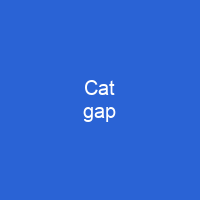The Cat Gap: A Fossil Mystery Unveiled
Imagine a timeline stretching back millions of years, where the story of our feline friends is written in stone. But what if there was a period when these majestic creatures seemed to vanish? That’s exactly what the cat gap represents – a mysterious 6.5 million-year stretch (from 25 million to 18.5 million years ago) during which few cat fossils were found in North America, leaving us with more questions than answers.
Now, let’s dive into this intriguing puzzle. All modern cats and their relatives evolved from a group called miacoids between 66-33 million years ago. But the first true cat, Proailurus, didn’t appear until about 30 million years ago. And then, for 10 million years after that, there were no felid fossils – the ‘cat gap’ had begun.
What Caused the Cat Gap?
The cat gap isn’t just a simple absence of cats; it’s a complex mystery wrapped in layers of geological and evolutionary history. Could climate change, volcanic activity, or even shifts in habitat play a role? Some scientists suggest that changes in dental morphology might have driven this gap, while others point to the van der Hammen cycles – periodic climatic fluctuations that could have affected ecosystems.
One thing is certain: 8 million years ago marked the beginning of the cat gap in North America. This period saw the extinction of nimravids and felids, along with entelodonts. The landscape was changing rapidly, and it’s fascinating to consider how these changes might have impacted our feline ancestors.
From Pseudaelurus to Modern Cats
The turning point in this story came when Pseudaelurus appeared on the scene. This cat-like creature crossed over from Asia via the Bering land bridge and became the ancestor of all modern cats. But what about those saber-toothed animals like nimravids and barbourofelids? They were cat-like, but not true cats – they belonged to a different family called feliforms.
So, why did Pseudaelurus succeed where other cat-like creatures failed? The answer might lie in the environmental changes that occurred during this period. As caniforms (like dogs and bears) evolved to fill the ecological niches left vacant by cats, it’s clear that the landscape was undergoing significant transformations.
Volcanic Activity and Cooling Temperatures
The Fish Canyon eruption, a major volcanic event around 26 million years ago, might have contributed to cooling temperatures and reduced forest cover. This could have made it difficult for nimravids and felids to survive in North America during the cat gap.
Hypercarnivorous Canids: A Side Story
Interestingly, some researchers proposed that canids (like dogs) evolved hypercarnivorous morphologies because feliforms were absent. However, recent data suggests this hypothesis might not hold water. The disappearance of hypercarnivorous forms during the cat gap and their gradual decrease before felids immigrated to North America challenge this idea.
Despite increased origination intensities near the end of the period, it wasn’t until felids arrived that hypercarnivorous morphospace was substantially invaded. This suggests a more complex interplay between environmental factors and evolutionary pressures during this fascinating period in history.

The cat gap remains a captivating mystery, filled with unanswered questions and intriguing theories. As we continue to uncover more fossils and analyze the evidence, perhaps one day we’ll piece together this puzzle and understand exactly what happened during those 6.5 million years of feline silence.
You want to know more about Cat gap?
This page is based on the article Cat gap published in Wikipedia (retrieved on December 1, 2024) and was automatically summarized using artificial intelligence.







